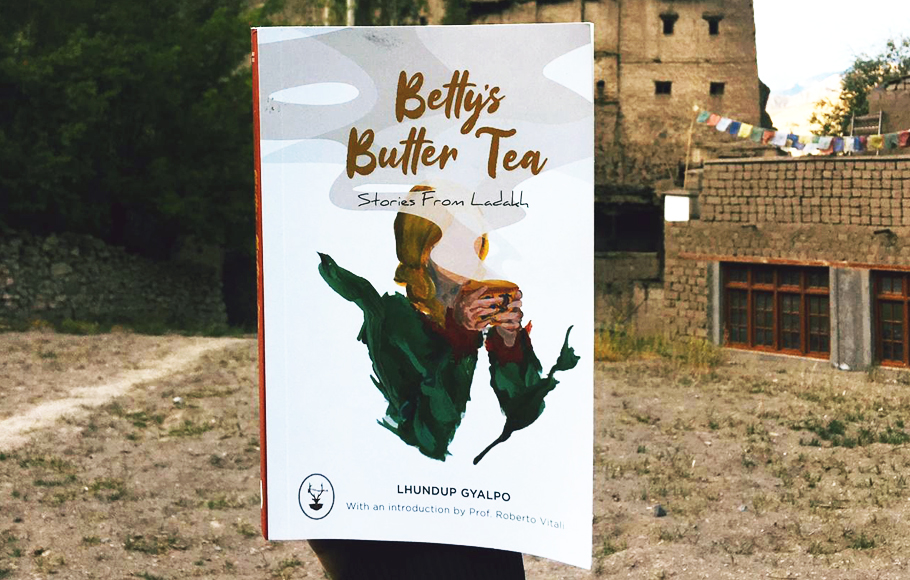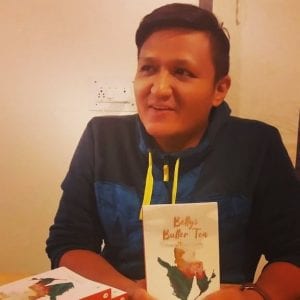
Betty's Butter Tea: Capturing Ladakh's idiosyncrasies through untold tales

Ladakh appeared in English literature as late as the 19th century, initially in colonial records, travelogues and later in historical accounts by western scholars, barring a few. However, any work of fiction has been almost absent from the literary landscape of the region as storytelling was largely confined to oral transmission. And, the tales that were written, were in native languages with limited outreach.
In such a context, a work of fiction by a Ladakhi is like rains after a long spell of drought. Betty’s Butter Tea: Stories from Ladakh by Lhundup Gyalpo is a pioneering work that paves the way for a new dawn in English literature in Ladakh — a precursor to quench the long and persisting literary void in the cold deserts of trans-Himalayas.
Lhundup Gyalpo’s debut collection reflects on the current Ladakh and the rapid transition it witnessed in the last three to four decades. Caught in a traditional yet provisional Ladakh, every story has a visitor grappling with its cultural intricacies and idiosyncrasies. The book seamlessly leads the reader on a journey stretching from the stark but harsh physicality to the philosophical and spiritual underpinnings of the region while dwelling on its silk-route characteristics marked by a pluralistic society.

His composition becomes more complex and intricate as the reader advances in the book. The stories are increasingly populated with multi-generational characters, shifts in plots, sprinklings of subplots and multi-narrations that become prominent, but in a unified flow. They impeccably highlight the tangible facets such as physical settings, the remoteness of the land along with the subtlest aspects of life such as empathy, innocence and tranquility.
Through peculiar characters set in curious situations, the author touches upon not only mundane lives but also major concerns of Ladakh. For instance, in 34 Degree Centigrade, a foreign couple, James and Sophia, embark on a mission to sensitise the natives about the pristine but fragile environment in the wake of modern development. Upon confronted by a local leader, an assistant to the couple says, “I never imagined working on environment could draw such resistance.” James replies, “We are going against the wave, my dear. Of many years in this sector, I have seen the environmental organisations getting to bite the dust.” — thus noting the dichotomy of development and environment.
The Tryst juxtaposes life on farms in Westminster in the USA and a death on the Stok Kangri (a glacier in Ladakh). The protagonist, Jennifer goes through a prolonged agony, desperation and rage only to deduce at the end that “if it is incomprehensible, it doesn’t mean it doesn’t exist”. It’s a tragic tale with an unexpected redemption that defies the western minds.
Betty’s Butter Tea is the central story, resonating with the title of the book. A young American girl, married in a Ladakhi household, attempts to find her identity in the new society. It is set in a beautiful and peculiar village of Chiling, described as, “…small village on a small crag overlooking Zanskar River to the South. The soil of the gulley, walled by craggy mountains, is abundantly rich in copper metal.” In the 17th century, King Deldan Namgyal invited a group of Nepali artisans who later settled in the village on his insistence. Since then, Chiling evolved as an artisan village, with families specialising in metalwork.
The author develops his idea of art as a profession through the character of Gonbo, Betty’s husband. The young man, a fine arts graduate from Delhi University, becomes a coppersmith. His inclination towards his family profession is sternly resisted by his mother who aspires to see her son as a government officer. However, his father, an artisan, stands behind Gonbo and advises, “A profession choosing you and you choosing a profession are two different things. Only a few are fortunate and courageous enough to be of the latter kind. And, if you happen to be one of them, you should respect the gift of providence.”
The story vividly portrays the familial and village life of people engaged in farming, celebrations, and rituals, while Betty being engrossed in making butter tea, the staple beverage in Ladakhi households.
The World Record is a tale of its protagonists, a young couple, vindicating themselves of a sacrilegious act by assuaging the estranged gods of Ladakh. While atoning for their deeds, they cross the border. Reaching the forbidden land, they find themselves in a sensitive geopolitical contestation around the famed Pangong Lake. The story progresses through shifts in the plot from a personal to spiritual and mystical then to the geopolitical scene that embroils into a media hysteria. Finally, culminating into an unintended world record.
The Book of Horror is a treat as well as a teaser to the reader at its best. The unusual interaction between a Ladakhi waiter and a Japanese, driven by their shared love for reading and books, unfolds in a thrilling and perplexing way.
Drop the Pin, I Dare You highlights the absolute reign of silence in Ladakh, relatable to only those who have visited the place. It speaks of the rapid stride of change Ladakh has witnessed in a short span of time. The characters of two brothers with substantial age gap embody the transition from an economy based on barter system to tourism, from being farmers to porters as a choice of profession and from a communication network of post runners to telephones.
To sum up, Betty’s Butter Tea is a mosaic of tales of comedy, tragedy, oddity and sometimes mystery. It is an authentic fiction that justifies this unique land and people tucked away from the world just decades back. As Ladakh embarks on a new journey with the recent administrative reorganisation ushering in a new wave of change, storytelling as a medium to preserve its unique culture and identity has gained an unprecedented currency. A solid foundation of a society is based on intangible ideals and values, hopefully more fictional narratives from Ladakh would help in keeping up with such ideals in the coming years.
The writer is an Assistant Professor at Ladakh University.


